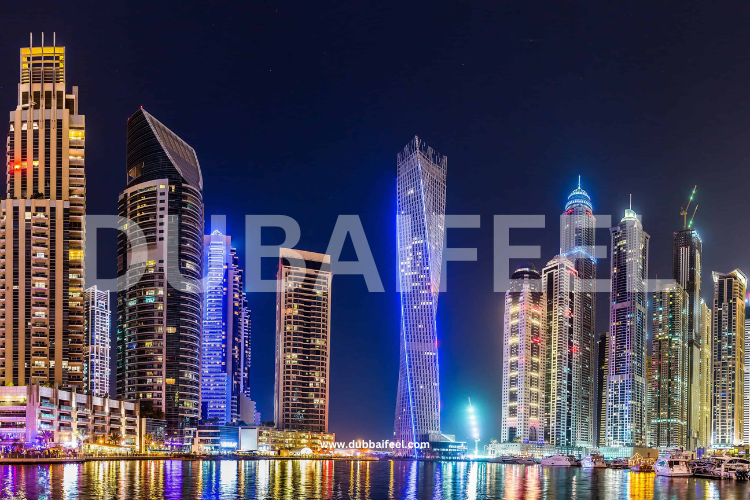Dubai has become synonymous with a breathtaking skyline that stands out for its architectural marvels, including the Burj Khalifa, Dubai Frame, and Palm Jumeirah. Despite rapid growth, Dubai maintains its iconic skyline through strategic urban planning, cutting-edge technology, and strict architectural guidelines.
1. Strategic Urban Planning for an Iconic Skyline
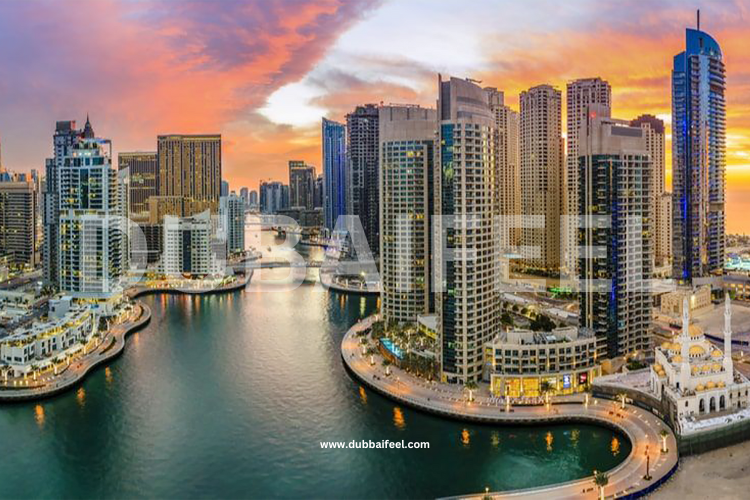
Dubai’s skyline, renowned for its futuristic architecture and iconic skyscrapers, is a testament to its strategic urban planning. The Dubai 2040 Urban Master Plan, a prime example of this forward-thinking approach, sets a clear vision for the city’s development over the next two decades.
This comprehensive plan ensures that future growth meets the population’s needs and preserves and enhances the city’s stunning skyline, maintaining its global reputation as an architectural marvel. The plan’s commitment to sustainable growth and development is evident in its focus on creating green spaces, eco-friendly building designs, and energy efficiency. The result is a skyline that dazzles with its height and design and reflects Dubai’s optimistic vision for a sustainable future.
Infrastructure development is a critical factor in maintaining Dubai’s iconic sky. The city’s urban planners ensure that infrastructure keeps pace with the speedy growth of residents and buildings. Efficient transportation systems, such as the expansion of the Dubai Metro and the development of pedestrian-friendly zones, are integral to this plan.
These systems reduce traffic congestion, which is crucial for a city with such a dense skyline, and enhance the overall livability of urban areas. The well-planned infrastructure supports the city’s towering structures and ensures that the sky remains a symbol of progress rather than chaos. Another critical aspect of the Dubai 2040 Urban Master Plan is the emphasis on balanced land use.
It involves careful zoning regulations that designate specific areas for high-rise development, while other zones are for low-rise residential or commercial buildings. This approach helps avoid overcrowding in districts dominated by skyscrapers, maintaining the skyline’s aesthetic appeal and structural integrity.
By distributing growth evenly across different parts of the city, Dubai ensures that its skyline does not become overwhelming or detract from other important aspects of urban living. The plan also prioritizes the creation of green spaces, which contrast the steel and glass structures that define the sky.
Parks, waterfront promenades, and other recreational areas are strategically integrated into the city’s layout to offer you a rest from the urban environment. These spaces not only enhance the quality of life but also enrich the beauty of the skyline by providing unobstructed views of the towering buildings set against natural landscapes.
Also read :Business in Dubai: 13 New Regulations Shaping Opportunities—The Good and the Bad
Moreover, the Dubai 2040 Urban Master Plan includes protecting and enhancing transit systems that will serve the growing population while complementing the skyline. By improving public transportation, reducing reliance on cars, and creating pedestrian-friendly areas, Dubai is crafting a city where the sky is not just a distant view but an integral part of daily life. These measures ensure that people can navigate the city efficiently, whether admiring the skyline from the ground or working in one of the many high-rise offices, and they can look forward to an exciting future of mobility in Dubai.
Dubai’s approach to urban planning is a model for cities experiencing rapid growth. The Dubai 2040 Urban Master Plan prioritizes sustainability, infrastructure, and balanced development to ensure the city’s sky remains an iconic symbol of its success. By carefully planning for the future, Dubai is expanding its sky and enhancing its overall appeal and livability. This forward-thinking strategy ensures that Dubai’s skyline will continue to captivate the world for years.
2. Architectural Standards and Innovation Shaping Dubai’s Skyline
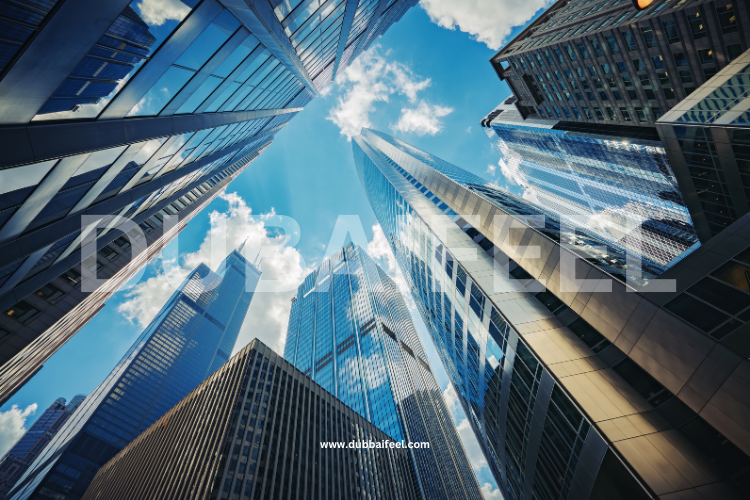
Dubai’s skyline is a stunning display of architectural prowess, and its continued growth and innovation are by strict architectural standards and cutting-edge technology. The city’s construction regulations ensure that every new building enhances the sky and adheres to the highest aesthetic, environmental, and safety standards.
This meticulous attention to detail and regulation has positioned Dubai as a global leader in architectural innovation, with each new development adding to the allure of its ever-evolving skyline. At the heart of Dubai’s architectural success are stringent construction codes. These regulations ensure that every project contributes to the city’s vision of modernity, safety, and sustainability.
High-quality materials are mandated to guarantee both durability and a sleek, polished appearance. This focus on quality has led to the development of buildings that are not only visually impressive but also resilient to the harsh desert climate. Using cutting-edge materials like energy-efficient glass and reinforced concrete ensures that Dubai’s sky remains beautiful and functional for years.
Innovation is also central to the design of Dubai’s iconic skyline. Visionary architects and engineers continuously push the boundaries of what is possible in construction. The Burj Khalifa, the world’s tallest building, is a testament to this spirit of innovation. It dominates the skyline and incorporates advanced technologies, enabling it to rise to unprecedented heights. From its aerodynamic design to its innovative structural systems, the Burj Khalifa represents a leap forward in skyscraper engineering, cementing Dubai’s place as a global hub of architectural excellence.
Another iconic structure contributing to Dubai’s skyline is the Cayan Tower, a twisted skyscraper demonstrating the city’s commitment to architectural originality. The building’s unique spiral shape, achieved through precise engineering, creates a visual effect that changes depending on the viewer’s angle.
This emphasis on creative design ensures that Dubai’s skyline is not just a collection of tall buildings but a dynamic and ever-changing visual experience. The Cayan Tower exemplifies how architectural innovation can transform the aesthetic of a city, making its skyline a work of art. Environmentally friendly practices are another critical component of Dubai’s architectural standards.
As the city continues to grow, there is an increasing focus on sustainable construction. Many of Dubai’s new buildings are designed with energy efficiency in mind, incorporating features such as solar panels, green roofs, and advanced water recycling systems. It ensures that the city’s skyline evolves harmoniously with global sustainability goals, reducing its carbon footprint while maintaining its architectural grandeur.
The Dubai 2040 Urban Master Plan further emphasizes integrating sustainable practices, ensuring that future developments contribute positively to the environment without compromising the skyline’s iconic status.
Integrating advanced technology is crucial in maintaining the skyline’s aesthetic and functional integrity. Intelligent building technologies, such as automated climate control and energy management systems, are becoming increasingly common in new projects. These technologies not only improve the efficiency and sustainability of the buildings but also ensure their long-term viability. As a result, Dubai’s skyline is both a symbol of innovation and a showcase of how modern technology can be in urban development.
Ultimately, Dubai’s approach to architectural standards and innovation ensures that its skyline remains one of the most recognizable and admired in the world. By enforcing strict construction regulations, promoting sustainability, and encouraging architectural creativity, Dubai attracts visionary architects and engineers eager to leave their mark on the city.
The result is a skyline that is not only visually stunning but also reflects Dubai’s status as a global leader in architectural excellence. As the city grows, its commitment to innovation and quality ensures that the skyline will remain a powerful symbol of Dubai’s ambition and forward-thinking approach.
Also read : 5 Reasons Dubai’s Cultural Heritage Is a Major Tourist Magnet: The Pros and Cons
3. Sustainability Initiatives Enhancing Dubai’s Skyline
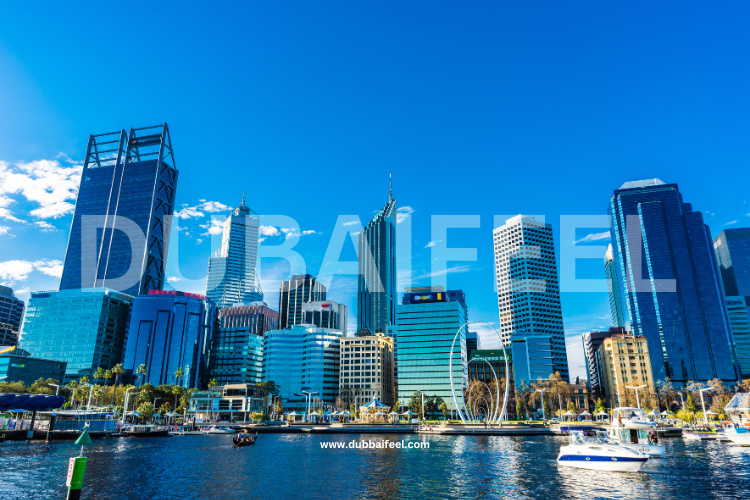
Dubai’s impressive skyline is not only a symbol of its rapid urban growth and innovation but is also a reflection of the city’s commitment to sustainability. Dubai has made significant strides towards integrating sustainable architecture into its urban fabric in recent years. This focus on eco-friendly design ensures that the city’s iconic skyline remains visually stunning and environmentally responsible.
Through green building practices and renewable energy initiatives, Dubai aims to balance its rapid development with its long-term environmental goals, creating a skyline that is as sustainable as it is breathtaking. One of the most notable initiatives is incorporating green architecture into the design of newer buildings. Many of Dubai’s recent architectural projects are designed with the environment in mind, seeking to minimize carbon footprints and energy consumption.
From the materials used in construction to the building’s operational efficiency, sustainability is now a critical consideration in shaping Dubai’s ever-evolving skyline. Using energy-efficient glass, solar panels, and intelligent building technologies has become common practice, allowing skyscrapers to consume less energy and contribute less to urban heat.
The Sustainable City, a flagship project in Dubai, exemplifies the city’s focus on eco-friendly urban development. This innovative community mainly operates with zero net carbon emissions and showcases renewable energy solutions such as solar power and water recycling systems. The Sustainable City is a model for eco-friendly living and demonstrates how Dubai’s skyline can evolve to align with global sustainability objectives.
The success of this project paves the way for more developments that blend luxury and innovation with environmental responsibility. In addition to using renewable energy, Dubai is also adopting new constructions to meet global sustainability standards. Buildings that earn this certification are mainly to be energy-efficient, environmentally friendly, and resource-conscious, reducing the city’s overall environmental impact.
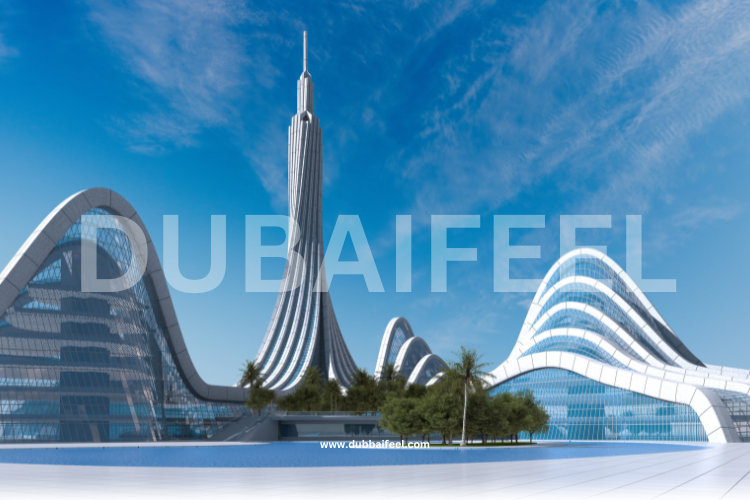
This approach ensures that Dubai’s skyline meets aesthetic and technological standards and embodies the city’s long-term commitment to sustainable growth. Dubai is also making efforts to integrate nature into its urban environment, further enhancing the sustainability of its skyline. Projects like the Dubai Creek Harbour feature extensive green spaces, water features, and tree-lined streets that beautify the area and help offset the environmental impact of urbanization. These initiatives are critical in a city known for its extreme temperatures, as they contribute to reducing heat islands and improving air quality.
By blending skyscrapers with green spaces, Dubai sets a new standard for how urban skylines coexist with nature.
Moreover, many of the city’s new skyscrapers are designed with intelligent technologies that improve energy management and reduce waste. These innovative systems allow buildings to monitor and adjust their energy usage in real time, minimizing power consumption and optimizing resources.
This technological integration is critical in helping Dubai’s skyline become more sustainable without sacrificing the luxury and innovation that the city is known for. Buildings like the Burj Khalifa and the Museum of the Future harmoniously integrate technology into sustainable design, showcasing how innovation can enhance eco-friendly architecture.
Dubai’s sustainability initiatives are reshaping its skyline into one that dazzles with its architectural grandeur and champions environmental stewardship. The city is creating a skyline that reflects its commitment to sustainable development by combining green architecture, renewable energy, and intelligent technologies. As Dubai grows, its focus on eco-friendly design will ensure that its skyline remains an iconic symbol of progress and environmental responsibility, setting a benchmark for other cities worldwide.
4. Controlled Growth and Expansion
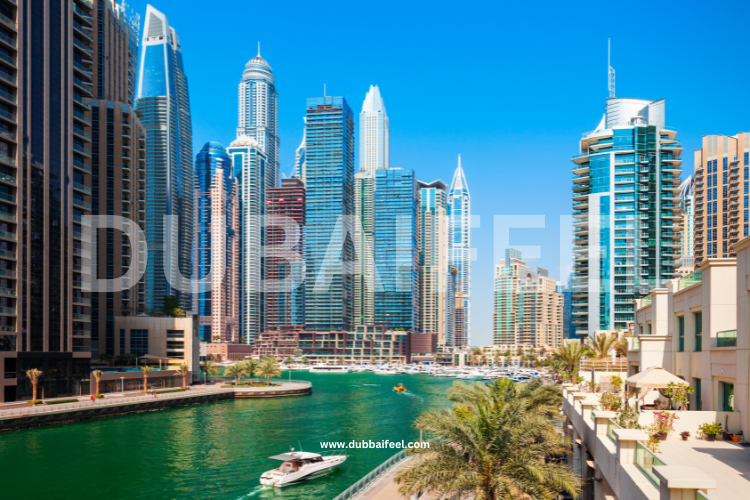
Dubai’s skyline is renowned for its architectural marvels, but what sets it apart from many other rapidly growing cities is the careful control over where and how skyscrapers are there. Strategic zoning laws and urban planning initiatives make this controlled growth and expansion possible. By designating specific areas for high-rise developments, Dubai ensures that its skyline maintains harmony and avoids overcrowding while allowing continuous growth and development.
One fundamental way Dubai manages this balance is through its zoning regulations. These laws carefully segregate high-rise areas from low-rise residential and commercial zones, ensuring that the city’s skyline grows well-planned and aesthetically pleasing. For example, Downtown Dubai, Dubai Marina, and Business Bay districts are mainly for taller structures.
This zoning strategy allows for the concentration of skyscrapers in certain parts of the city, creating iconic views while preserving the charm and livability of other areas. Downtown Dubai is perhaps the most recognizable part of the city’s skyline, thanks to the Burj Khalifa, the tallest building in the world. This district is home to a cluster of high-rise buildings contributing to the city’s image as a global architectural leader.
By concentrating these towering structures in a designated area, Dubai ensures its skyline remains cohesive and visually striking. The concentration of skyscrapers in Downtown Dubai also allows other city areas to develop in a more traditional, low-rise manner, maintaining a balance between modernity and tradition.
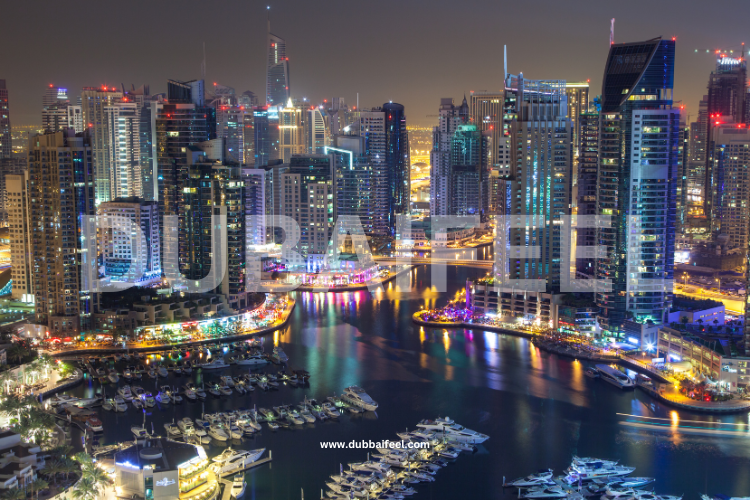
Similarly, Dubai Marina is another area where tall buildings dominate the skyline. This waterfront district is known for its stunning skyscrapers, including some of the tallest residential buildings in the world. The careful planning of Dubai Marina ensures that these buildings complement the waterfront, creating a distinctive skyline that blends modern architecture with scenic views of the Arabian Gulf.
The zoning laws in this area ensure that skyscrapers do not overwhelm the surroundings but instead enhance the visual appeal of the marina. Business Bay, another designated high-rise district, is crucial in shaping Dubai’s skyline. This area, which serves as a commercial hub, is filled with office towers, luxury hotels, and residential buildings.
Like Downtown Dubai and Dubai Marina, Business Bay is carefully planned to accommodate skyscrapers while maintaining a functional and visually appealing environment. The concentration of tall buildings in this area helps Dubai manage its growth without compromising the overall harmony of the city’s skyline. Beyond these specific districts, Dubai’s zoning laws also prevent the unchecked construction of skyscrapers in other parts of the city.
Low-rise areas like Jumeirah and Al Barsha are protected from high-rise development, preserving their character and offering residents a quieter, more relaxed environment. This approach allows Dubai to grow vertically in designated areas while maintaining the quality of life in other regions.
Moreover, this controlled expansion contributes to the overall visual harmony of Dubai’s skyline. By concentrating skyscrapers in critical areas, the city creates distinct, recognizable zones, each with its own architectural identity. It ensures the skyline remains varied and exciting rather than becoming a monotonous sea of high-rise buildings.
The thoughtful placement of skyscrapers allows Dubai to create focal points, like the Burj Khalifa and the twisting Cayan Tower, which stand out against the rest of the city and give the skyline its unique character. Dubai’s controlled growth and expansion, guided by strategic zoning laws and urban planning, have been pivotal in shaping its stunning skyline.
The city maintains a harmonious balance between tall and low-rise structures by designating specific areas like Downtown Dubai, Dubai Marina, and Business Bay for high-rise developments. This approach not only preserves the visual appeal of the skyline but also ensures that Dubai continues to grow sustainably and organized, offering a model for other rapidly expanding cities to follow.
5. Maintenance and Renovation
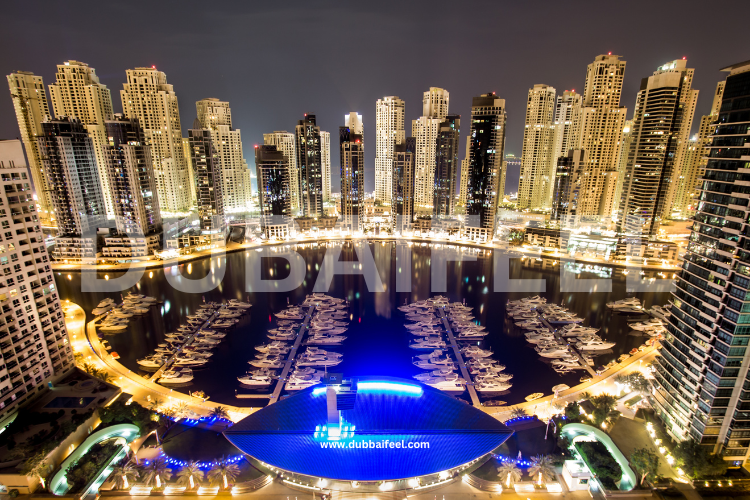
Dubai’s iconic skyline is a testament to innovative new developments and the city’s dedication to maintaining its existing architectural landmarks. Regular maintenance and renovation are critical in preserving these buildings’ visual appeal and structural integrity. Skyscrapers like the Burj Khalifa and the Emirates Towers undergo periodic updates, incorporating modern technology to improve energy efficiency and safety standards.
This commitment to maintenance ensures that Dubai’s skyline stays not solely visually attractive but also structurally sound. Renovations often focus on enhancing the exterior and interior of these iconic structures, ensuring that they continue to represent the cutting edge of design and technology.
By investing in the upkeep of its architectural gems, Dubai demonstrates that its skyline is about more than just new developments—it’s about preserving the city’s legacy while ensuring its future. This balance of innovation and preservation helps maintain Dubai’s status as a global leader in urban design.
Also read : 4 Ways to Enjoy a Luxurious Dubai Experience Without Breaking the Bank.
